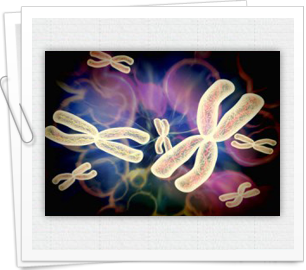Online CPR Certification Blog
Your genetic secrets might be at a risk
Date: November 16th, 2013
 People submit their genetic material to scientific researchers expecting that they will remain anonymous and the secret won’t be exposed to anyone. However, a recent study has demonstrated that this privacy could be breached, in particular, of the male volunteers. According to a report that appeared in journal Science in the issue of Jan. 18, the researchers said that they determined the identities of about 50 people who had gone through genome sequencing. However, the only people who could be identified directly were males as scientists use info present on Y chromosome only.
People submit their genetic material to scientific researchers expecting that they will remain anonymous and the secret won’t be exposed to anyone. However, a recent study has demonstrated that this privacy could be breached, in particular, of the male volunteers. According to a report that appeared in journal Science in the issue of Jan. 18, the researchers said that they determined the identities of about 50 people who had gone through genome sequencing. However, the only people who could be identified directly were males as scientists use info present on Y chromosome only.
Steps of genetic material identification
The first step involved pulling up the unique but anonymous information online. The databases found in genomics are available publicly and have thousands of genomes, without any explicit identifier, i.e. they don’t have the surname or name of the person, says Yaniv Erlich, the study author. What the study showed was that it is possible for one to get a genome from the database available publicly for analyzing Y chromosome where the genome is from a male. Erlich can do this as he is a distinguished fellow of Whitehead Institute for Biomedical Research, however, what about people who have no specialized knowledge? One needs some skills in order to accomplish this. Even though you can use tools that are readily available, you must have an idea of exactly what you need to do. This research cannot be done by a layperson and involves a learning curve. However, the good thing is that no lab is needed but just a PC with Internet connectivity.
Using genetic genealogy sites to match DNA
Once you have the information with you, the next step involves genetic genealogy sites like Family Tree DNA where people can look for their ancestors. The Y chromosome is analyzed and the data is used in a different recreational genetic genealogy database. Some of the databases even have search engines and you can pull the Y chromosome markers for matches in search. In case the anonymous specimen of donor’s genome is related to an ancestor in the search site, the last name will appear immediately. This won’t be your brother but could probably be one of your second cousins and can at times be larger than this where it propagates very far on the family tree depending on the connection between Y chromosome and surname.
It is not possible to use this method for identifying women directly as they have X chromosomes only and their surnames are rarely passed on via generations. However, after uncovering the last name, there was another step that remained. Many people share a surname and you can reveal the name, state and age from research databases and narrow down to maybe 12 people. An individual can further be pinpointed by using public information from Internet search tools.